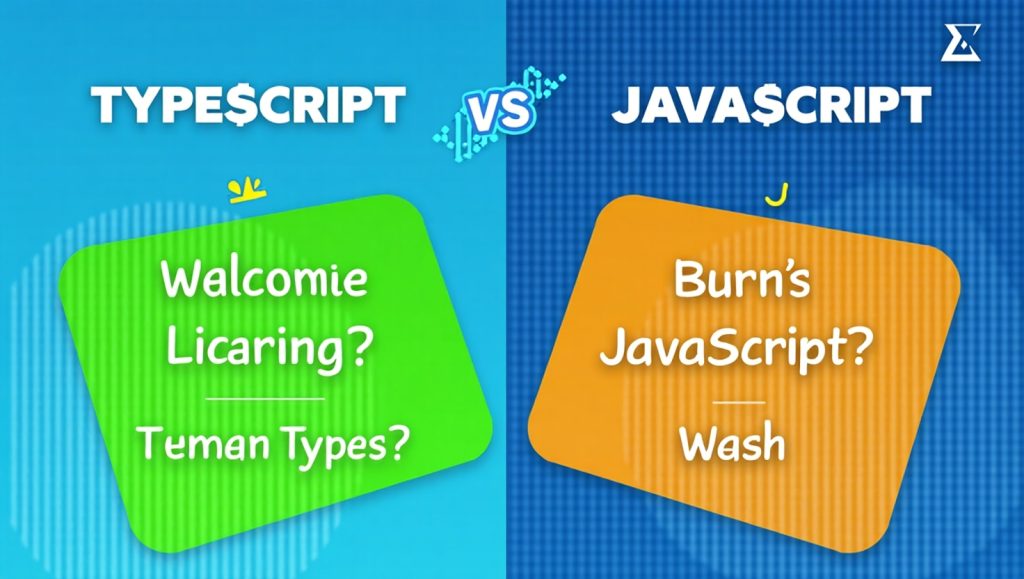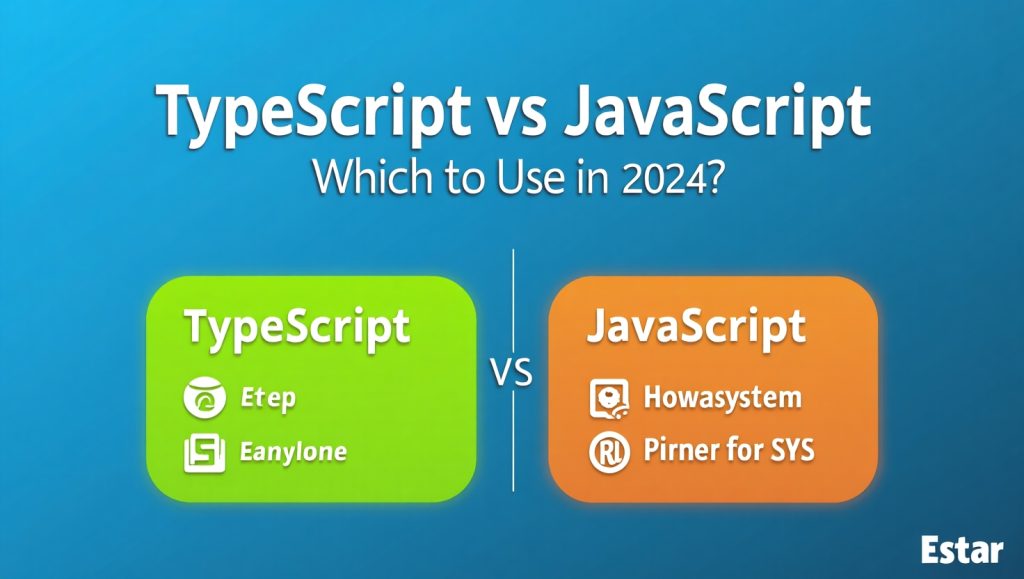
Understanding the Basics of JavaScript and TypeScript
To consider JavaScript or TypeScript in 2024, one first needs to know what each one is. JavaScript has become a basic programming language for the last several decades since its establishment in the mid-1990s. It is used in web development in general for both front-end and back-end application development. It is dynamic and has flexible syntax. It is supported on all modern browsers. If you’ve ever interacted with a website—clicked a button, filled a form, or watched a loading spinner—then chances are you’ve already seen some of the works of JavaScript.
TypeScript, however, is a Microsoft-developed statically typed superset of JavaScript. It extends the type systems of JavaScript with additional features, particularly the use of type annotations, thereby helping developers catch errors in the development stage rather than at the runtime. Unlike JavaScript, TypeScript needs to be compiled into JavaScript to run in the browser.
To summarize, JavaScript is a free hand. You can draw anything, but mistakes are frequent. TypeScript allots boundaries. You get to choose, but within reason. In 2024 both languages are in healthy demand, but they suit different kinds of projects best.
If you’re a beginner or working on something small, JavaScript may feel less scary. But, with more complex applications and teams, TypeScript could offer safer structures.
Why JavaScript Remains Widely Used
JavaScript has earned fame in decades, and that fame or popularity sustains. One of the most important reasons for continuing JavaScript supremacy is its universality; it works everywhere-from your browser to your server to mobile apps-and this is why it is vital in the modern web development stack.
Another accolade or credit towards the advantages of JavaScript is its vast ecosystem. There are millions of libraries, frameworks, and tools available-just a few that use JavaScript extremely heavily include React, Vue, Node.js, and Express. Because of this, it becomes quite easy for developers to find a solution to their problem without having to reinvent the wheel.
JavaScript also has a lower entry barrier. You do not need any special tools or compilation steps to jump in and start coding. You can simply open your browser’s console and get started playing around. This is what makes JavaScript a great language for beginners, hobbyists, and even experienced developers prototyping quickly.
So, JavaScript is going to be there for a long time or even a long time. Diversity, large-scale use, and a huge community make it as viable as any other option-especially in those projects where speed and simplicity are at a premium.
Why TypeScript Is Gaining Popularity
In 2024, TypeScript might have crossed the boundaries of being a niche tool to being a prerequisite for many professional environments; but is there something about the language that spurs its oncoming popularity? First off, we could call TypeScript a clear winner for tooling and developer experience. Owing to its static typing system, Typography editors such as VS Code-a product of Microsoft-provide amazing autocompletion, enhanced navigational enablements, and powerful refactoring tools. This equals fewer bugs, better code, and high maintainability.
Another big plus for TypeScript is its capability for large-scale applications. Within a team, TypeScript keeps everyone on the same page by enforcing very strict contracts between different sections of the application. When one developer goes ahead and changes the code within a function, TypeScript ensures the correctness of any and all codes that work with that function from the perspective of every other developer. This becomes one extra layer of preventable pain.
And one should really note that JavaScript sits at TypeScript’s heart. Gradual adoption, file by file, is possible in an existing JavaScript project. This in turn lends teams a graceful transition to modernity.
The bottom line? If you’re looking to engage in any large program, TypeScript is an invaluable language to learn given its maintainability for years to come.
Performance and Speed: Do They Differ?

Inquiring minds want to know whether TypeScript offers any runtime efficiencies over JavaScript. In a nutshell, if TypeScript gets compiled into JavaScript, there can be no difference in runtime performance. Thus, any performance issues that concern JavaScript will also affect TypeScript.
Having said that, the development experience can be an important factor in the ability of a team to write performance-oriented code. TypeScript’s tooling may help to catch inefficient code patterns earlier, leading to the potential for better overall performance. But the actual performance of the finished product depends totally on the JavaScript code into which it gets compiled.
The discrepancies in performance may creep in during the development stage, because TypeScript does add a compilation step that can, if only slightly, slow things down, especially in a large codebase. All things considered, there hasn’t actually been much of a slowdown incurred recently on this front with the advent of modern tooling and IDEs.
So if at all, do not take TypeScript instead of JavaScript, or vice versa, for the sake of performance. Both perform equally well on paper, but TypeScript does have an edge during development, which, if used wisely, can translate into greater possibilities for optimization and performance enhancement.
Which One Should You Choose in 2024?
The primary question now is whether to go for JavaScript or TypeScript come 2024. Depending on your inclination towards your needs, project scope, and team dynamics.
JavaScript would suffice for you if you would be an individual developer or would involve smaller, faster projects- landing pages, simple interactive sites, or fast backend services. It’s very quick to write, easy to debug, and is everywhere supported. There will no longer be any worries over installing a compiler or dealing with complex type definitions.
If you work as part of a team or maintain a large code base or create an application for long-term scalability, then TypeScript is the better option. In the long run, its strict typing system, good documentation, and tooling support allow you to save a tremendous amount of time (and sanity).
There is no single answer that applies to everyone. Fortunately, they are not at all mutually exclusive. You can start with JavaScript and migrate to TypeScript whenever you feel competent or use TypeScript right from the beginning with tools like Vite or Next.js that support it out of the box.
It should be in accordance with your objectives and the complexity of what you’re building.
conclusion
Neither can be judged as better than the other concerning your project; it just boils down to which one is more suited for the project. JavaScript remains the heart of the web while TypeScript is proving itself as the brighter, yet more disciplined, sibling.
For beginners, JavaScript is quite easy to use, making it very welcoming. But once the user becomes comfortable with it and wants to grow, TypeScript easily steps in to assist in writing cleaner, safer, and more scalable code.
Whichever avenue you take, however, you are investing in skills whose currency value is sufficiently high in the tech landscape today. Keep learning, keep experimenting, and keep building.